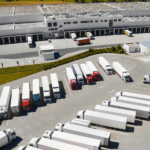Manhattan’s commercial real estate market, particularly in leasing, is witnessing a significant rebound after the challenges posed by the COVID-19 pandemic. As the city’s economic engine begins to hum once more, we see a mixture of optimism and caution, with various factors driving the resurgence and certain obstacles still tempering the pace of recovery. Below, we delve into the key elements fueling this turnaround and the hurdles that remain.
High-Quality Office Space Demand
One of the most notable trends in Manhattan’s leasing market is the growing preference for high-quality, Class A office spaces. These buildings, known for their premium amenities, advanced technology, and prime locations—particularly in districts like Midtown and the Financial District—are attracting substantial interest from tenants.
In the post-pandemic landscape, tenants are increasingly selective, favoring buildings that can adapt to evolving workplace dynamics. Spaces that offer flexibility, such as open floor plans, touchless technologies, and enhanced air filtration systems, are especially in demand. Moreover, companies are prioritizing buildings that accommodate hybrid work models, providing employees with an engaging and safe environment when they come into the office. This trend is reshaping the commercial real estate market as developers and landlords invest in modernizing properties to meet these new expectations.
Corporate Relocations and Expansions
Several large corporations have relocated or expanded their operations in Manhattan, driving the leasing market’s recovery. Industries such as finance, technology, and law are leading the charge, as these sectors continue to establish or expand their headquarters or regional offices in key areas of the city.
The decision by these businesses to invest in Manhattan signals confidence in the city’s long-term economic potential. Notable relocations and expansions include technology companies seeking proximity to talent hubs and financial institutions looking to maintain a presence in one of the world’s foremost financial centers. These moves are crucial as they not only fill vacant spaces but also set the stage for further economic growth by attracting more companies and talent to the area.
Impact of Hybrid Work Models
The widespread adoption of hybrid work models has significantly influenced office leasing in Manhattan. Rather than the traditional large office spaces that companies once sought, many businesses are now opting for more flexible, adaptable spaces that can accommodate both remote and in-office work.
Coworking spaces, short-term leases, and flexible terms have become increasingly popular as businesses look to reduce their real estate footprint while still maintaining a physical presence in the city. The demand for flexibility is reshaping leasing agreements, with many companies preferring month-to-month or shorter lease terms to adjust their space requirements based on changing work patterns. This has led to the rise of shared office spaces and coworking models, providing businesses with the flexibility they need to thrive in a post-pandemic world.
Incentives for Leasing
To bolster leasing activity, New York City has implemented various incentives aimed at attracting tenants. These include tax breaks, financial assistance, and other support mechanisms for businesses that are willing to either move into vacant spaces or renew existing leases. These measures have played a significant role in revitalizing the city’s commercial real estate market, making it more appealing for companies to return to or expand in Manhattan.
Incentives such as the “Relocation and Employment Assistance Program” (REAP) and “Commercial Revitalization Program” (CRP) have been instrumental in offering businesses the financial benefits they need to overcome high costs associated with leasing prime Manhattan office spaces. This, in turn, is encouraging companies to remain in or relocate to the city.
Recovery of Retail Spaces
Manhattan’s recovery in office leasing has had a positive ripple effect on street-level retail spaces. As more businesses reopen their offices, foot traffic in commercial districts is increasing, bringing customers back to retail stores that were struggling during the pandemic. Many retail spaces that were left vacant are now seeing renewed interest, as retailers adjust their strategies to align with evolving consumer behaviors.
The recovery of the retail sector is a vital component of Manhattan’s overall economic health, particularly in districts that rely heavily on office workers and tourists for business. Retailers are adopting hybrid models, such as curbside pickup and expanded online operations, to cater to both in-person and digital customers. This blended approach has helped many businesses stay afloat and thrive during the recovery.
Economic Indicators and Growth Projections
Positive economic indicators are helping to drive demand for office space in Manhattan. Employment figures have been rising steadily, and growth projections for the city’s economy through 2025 suggest a broader recovery. The financial sector, in particular, remains a cornerstone of Manhattan’s economy, with a steady influx of jobs that are fueling the need for commercial space.
While the economy continues to recover, Manhattan remains a desirable location for global companies seeking a presence in a major financial and cultural hub. As businesses continue to hire and expand, the demand for office space will likely rise, further contributing to the leasing market’s recovery.
Role of Technology and Sustainability
Technology and sustainability are increasingly influencing leasing decisions. Buildings equipped with smart technologies, such as automated systems for lighting, heating, and air conditioning, are more attractive to modern businesses. Additionally, tenants are showing a growing interest in buildings with sustainability certifications, such as LEED, as they prioritize corporate responsibility and eco-friendly practices.
Investing in green technologies is becoming a key strategy for landlords looking to attract environmentally conscious tenants. These efforts not only reduce the carbon footprint of office buildings but also lower operational costs for tenants, making these spaces more appealing in the long term.
Challenges in Commercial Real Estate Market
Despite the positive trends, challenges remain in Manhattan’s commercial real estate market. There is still an oversupply of office spaces, and while demand is increasing, it has not yet returned to pre-pandemic levels. Additionally, rental prices have fluctuated, and lease negotiations are taking longer as companies carefully assess their space needs in light of hybrid work models.
Moreover, balancing the demand for flexible work arrangements with the need for physical office spaces is a challenge that both landlords and tenants continue to navigate. The uncertainty surrounding long-term leasing commitments and the shifting dynamics of workplace environments require ongoing adjustments to meet the needs of modern businesses.
Manhattan’s leasing market is steadily recovering, driven by demand for high-quality office spaces, corporate relocations, and the adoption of hybrid work models. While challenges such as oversupply and fluctuating rental prices persist, the overall outlook remains positive. With the right mix of incentives and innovative real estate offerings, Manhattan’s commercial real estate market is well-positioned for continued growth in the coming years.
As the city evolves, its real estate market will need to remain adaptable to meet the changing needs of businesses and employees, ensuring that Manhattan remains a vibrant and attractive destination for global companies.



















